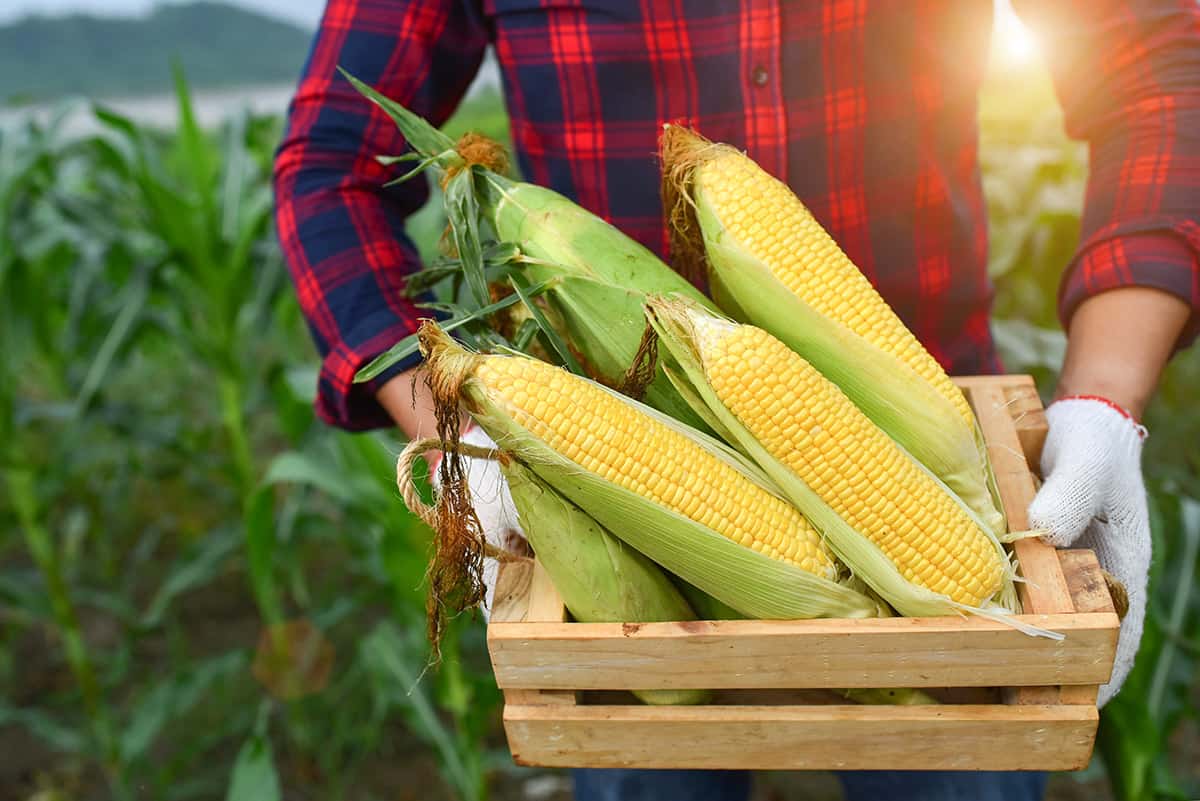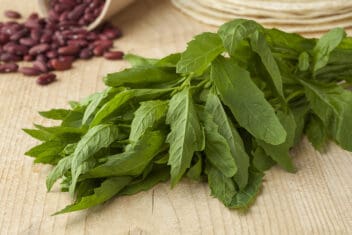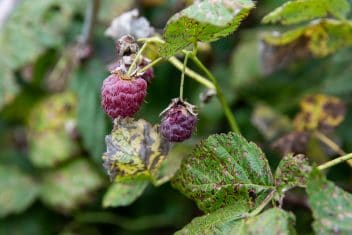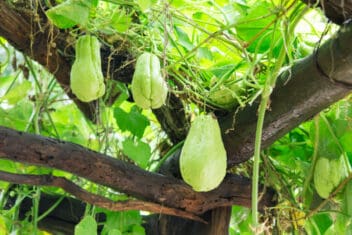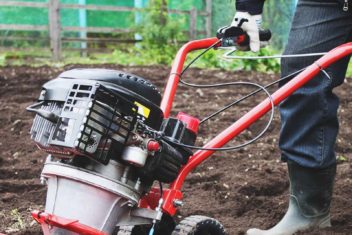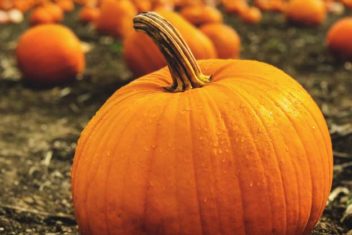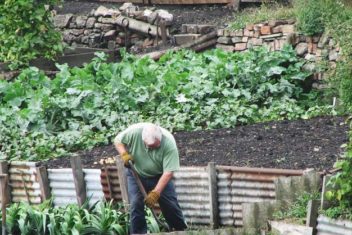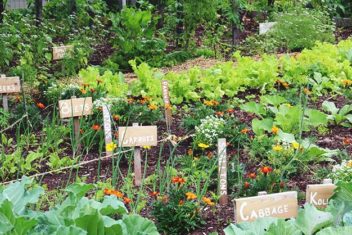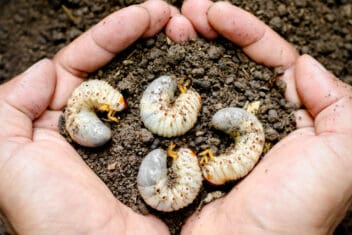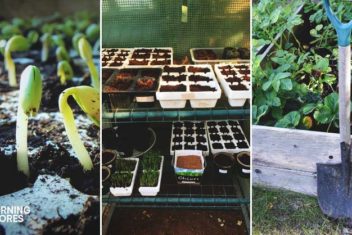Corn is a quintessential veggie crop to grow in the summer, and if you want to improve your corn harvest this year, you need some beyond-average tips.
If you’ve never grown corn, don’t stress out. It’s a fairly easy crop to grow well, but it does take up space in your garden. You want to make sure you’re trading that space for a decent harvest for your family to enjoy.
Last year I had the best corn harvest yet after years of growing it in my garden. I wanted to share some of my favorite tips for growing corn in my garden to help you this year.
Trust me; these work!
11 Tips to Get The Best Corn Harvest
Some of these tips you might already be doing, while others may come as a complete surprise. Try to implement as many as possible.
If you do, chances are you’ll have the best corn harvest you ever have. You’ll have plump, delicious ears of corn, and you might even have extra to put in your freezer this year!
1. Don’t Plant Too Early
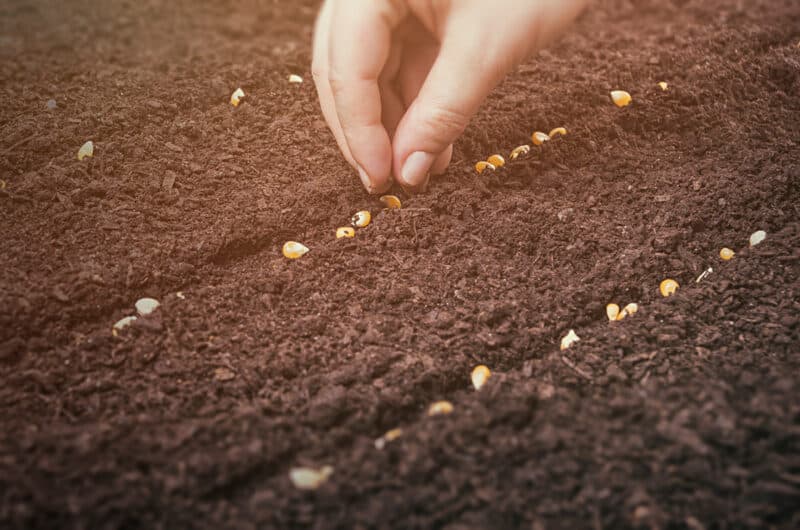
The first mistake you want to avoid when trying to improve your corn harvest is planting too early.
It’s tempting to plant as soon as the weather warms up, but don’t do it. Mother Nature tends to be tricky, so while it might seem like the weather is finally right, wait to start planting.
Corn germinates best in soil that is at least 60°F, so use a soil thermometer to make sure it’s warm enough to plant. That means it’s best planted after the final frost date in your area; corn isn’t frost-hardy.
2. Don’t Overcrowd Your Plants
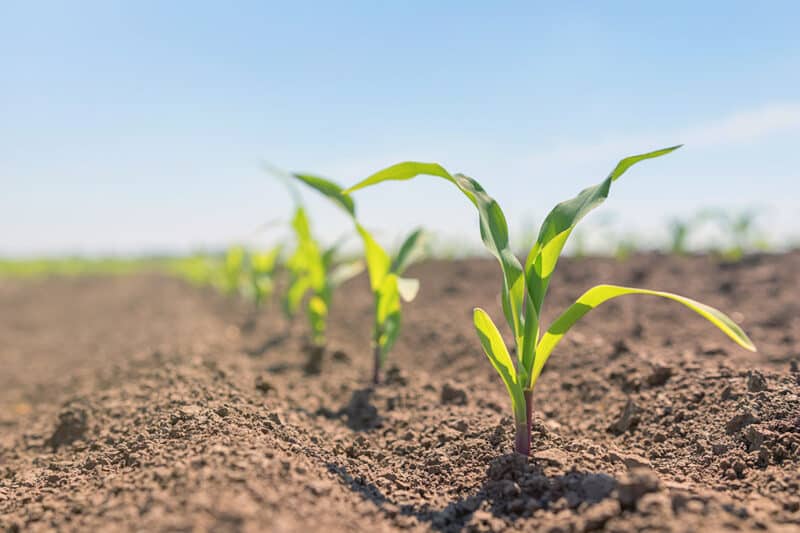
Corn tends to be the plant that is overcrowded more often than not. It’s easy to space tomato or pepper plants, but since corn is planted by seed and it grows so narrow and tall, it’s easy to fail to give the plants room to grow.
Corn needs to be spaced 8-12 inches apart. That gives the plants enough room to spread out and receive plenty of nutrients and sunlight. It helps to stop the spread of fungal diseases that likes areas with little airflow and moist conditions.
3. Try a Three Sisters Garden

When you grow corn, try using the knowledge we have from indigenous populations and plant a Three Sister Garden.
You’ll find plenty of ways to use this technique, but the three sisters are corn, beans, and squash.
Try planting beans and squash in between the rows of corn, or plant pole bean seeds with each corn stalk after they sprout. The beans will use the corn stalks as support and aerate the roots. Then, the squash keeps bugs and weeds away from your corn and beans.
4. Have Enough Plants for Pollination
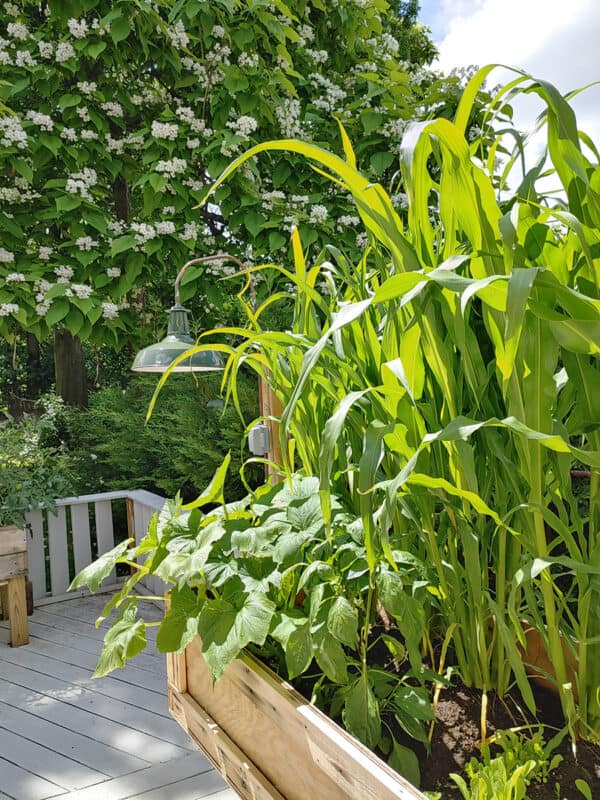
Corn is wind-pollinated, and it’s best when grown in blocks rather than rows. Growing corn in 4′ x 4′ blocks helps to keep the best pollination rate for your plants.
If you don’t know it, let me tell you now – growing different corn varieties isn’t a good idea. They need to be spaced apart and planted at different times to avoid cross-pollination.
Different corn varieties need to be spaced 10 days apart when you plant to avoid cross-pollinating, and 25 feet apart is recommended.
I didn’t know this a few years ago.
I planted two varieties of corn next to each other at the same time. One variety was sweet corn for fresh eating, and the other was a popcorn variety. They cross-pollinated, and I ended up with inedible sweet corn and the popcorn that didn’t look like what I wanted.
5. Keep The pH Range Right
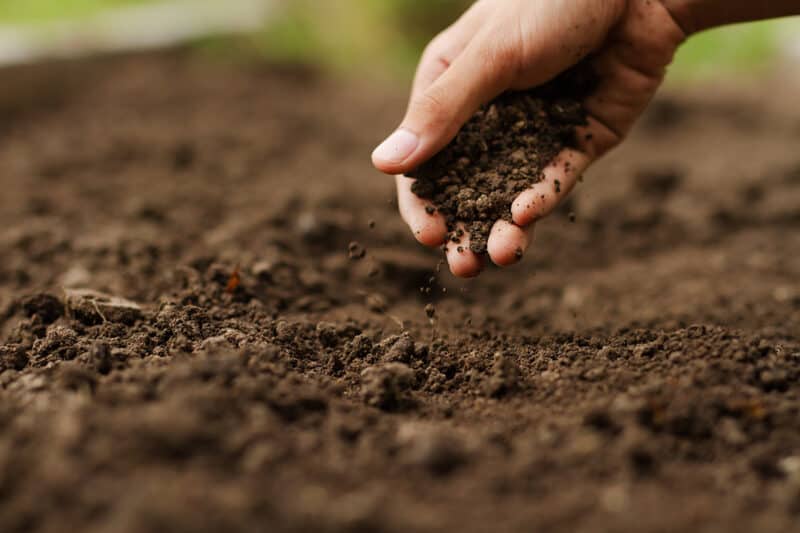
If you want to have the best corn harvest, make sure the soil has the right pH range for growth. The soil should be between 6.0 and 6.8, making it acidic but not super acidic.
Use a soil meter to check the pH range of your soil, and if you need to increase the soil acidity, try sulfur or aluminum sulfate, but use caution and follow the manufacturer’s directions closely.
While your corn plants will grow outside of this pH range, the best corn harvest happens when plants grow in their ideal range.
6. Add Plenty of Compost to the Soil
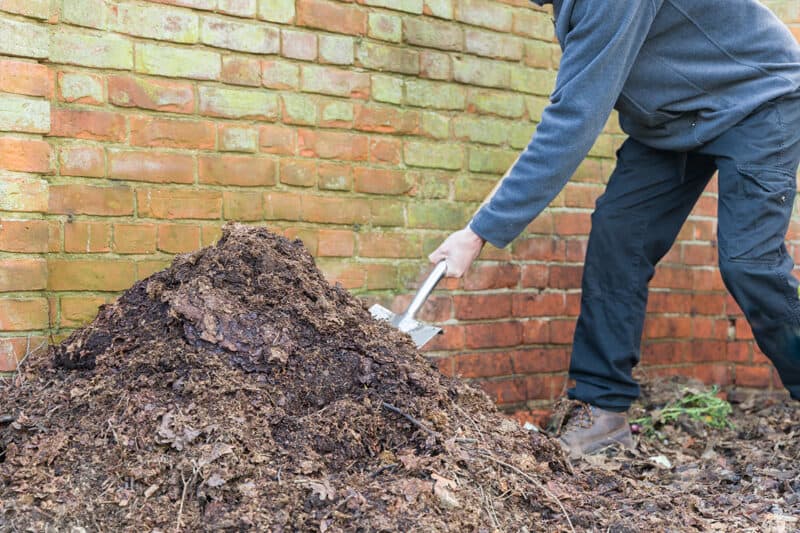
Some people think that corn plants aren’t heavy feeders, but that’s not true. You need to make sure you add compost to your soil before plant in the spring.
All you have to do is add several inches of compost to the top of your garden soil and mix it in thoroughly. That gives your corn plants plenty of nutrients as soon as they sprout and start to grow. A good start with plenty of nutrients is a key way to improve your corn harvest.
7. Keep The Soil Moist
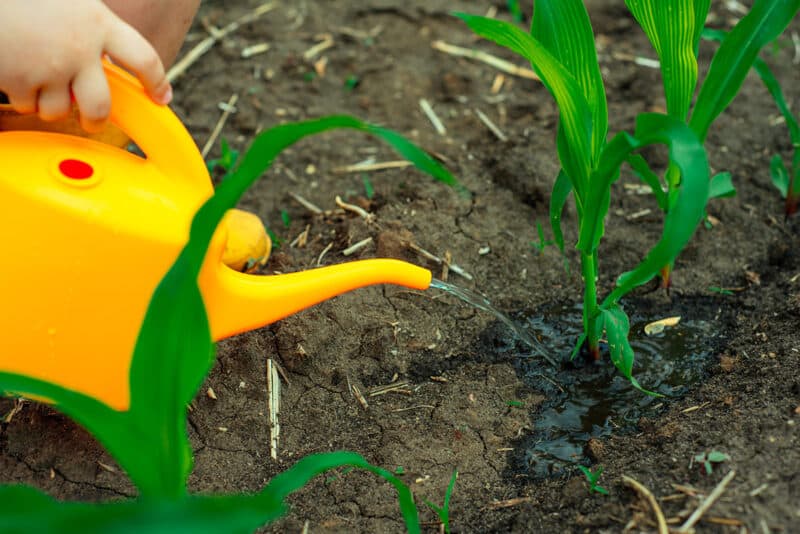
I realized last year that I never water my garden as much as I think it needs. The guidelines say that corn needs to be watered once or twice, but since I make sure I have well-draining soil, I’ve discovered that my corn grows better with more water than that.
If I water my corn three to four times per week, especially when the seeds are in the process of germinating and sprouting, they grow the best. Keep the soil moist throughout germination.
Corn has shallow roots, so deep watering isn’t as helpful because the roots aren’t going to grow deeper to find the water. That’s why using soaker hoses is a great way to make sure your corn plants receive all the water they need.
Honestly, if you ignore all tips for the best corn harvest but one, make sure this is the tip that you remember!
8. Fertilize Regularly
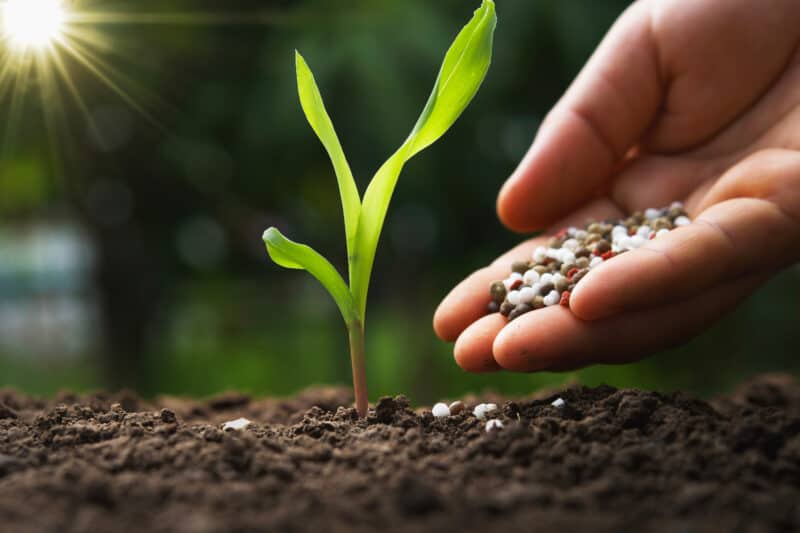
If you didn’t know, corn is a hungry plant and requires regular fertilization to grow and thrive. A continuously released fertilizer is a great idea because it gives the plants what they need throughout the growing season.
Watch the colors of the corn leaves. If they turn light green or yellow, then the plants need to be fed again.
Corn needs a lot of heavy nitrogen, so one of the best ways to meet the needs is to apply weekly fish emulsion. Foliar feeding of kelp fertilizer is great to apply when the silks appear on the plant.
9. Use Mulch to Stop Weeds
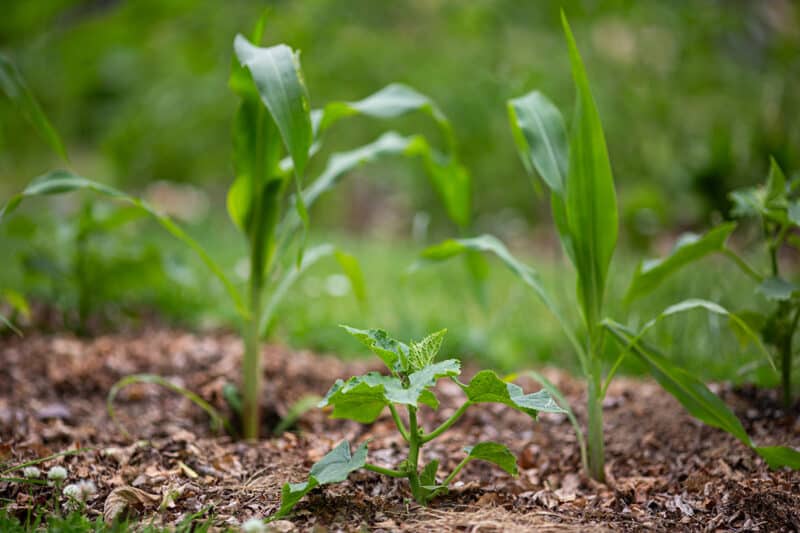
Mulch might seem like an optional step when growing corn, but it’s not. It’s an essential step to improve your corn harvest.
Apply several inches of mulch around the base of your corn plants because it helps to suppress weed growth and keeps the soil moist as consistently as possible. Weeds are a problem when growing corn because they steal the nutrients that your heavy feeding plants need for optimal harvest.
10. Don’t Wait Too Long to Harvest
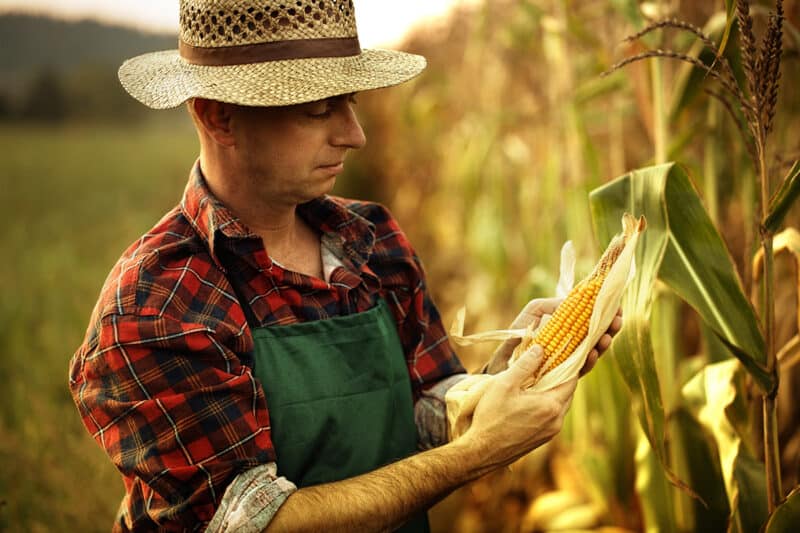
One of the mistakes I see when growing corn is waiting too late to harvest the corn. Most plants produce two ears of corn per stalk, but some hybrid plants might produce more.
The best way to decide if an ear of corn is ready for harvest is to look at the silks. The corn silks should be brown and dry with a bit of fresh green at the base. When you squeeze the husk, the ear should feel plump, not skinny.
11. Try a Cover Crop in the Fall Before Planting
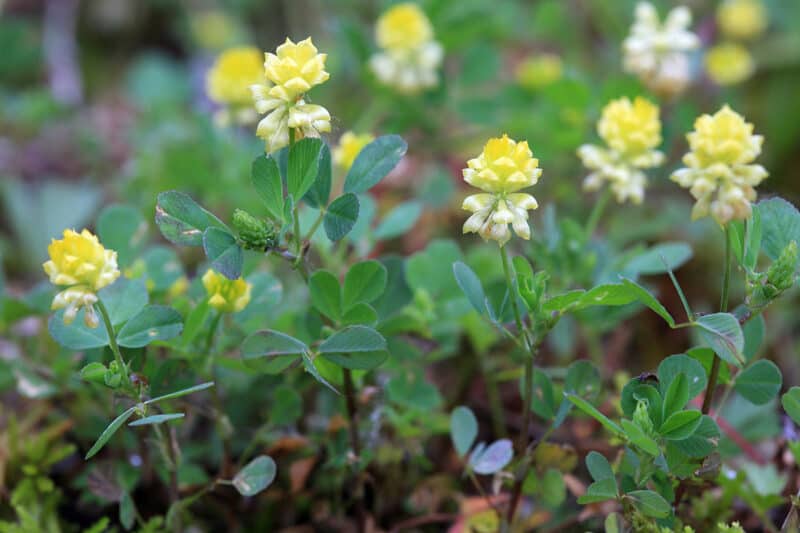
Here is another tip that made a huge difference for me when growing corn. Cover crops such as winter rye, black medic, vetch, and clover can be planted in the fall, and they put tons of nitrogen into the soil.
Remember, corn loves nitrogen! If you want to improve your corn harvest, give those stalks plenty of nutrition.
